More VRAM, But for Who? Nvidia RTX 2060 12GB Review
Today we're taking a look at the new GeForce RTX 2060, you know, the 12GB model that gamers were hoping would help solve the GPU shortage. Well, I suspect most of yous didn't accept high hopes on that 1, and those that did have probably already lost hope.
That's because after the official proclamation three weeks ago, at that place's basically no stock to be had, and the very few you can find at retail are grossly overpriced, even when compared to the 6GB models (!).
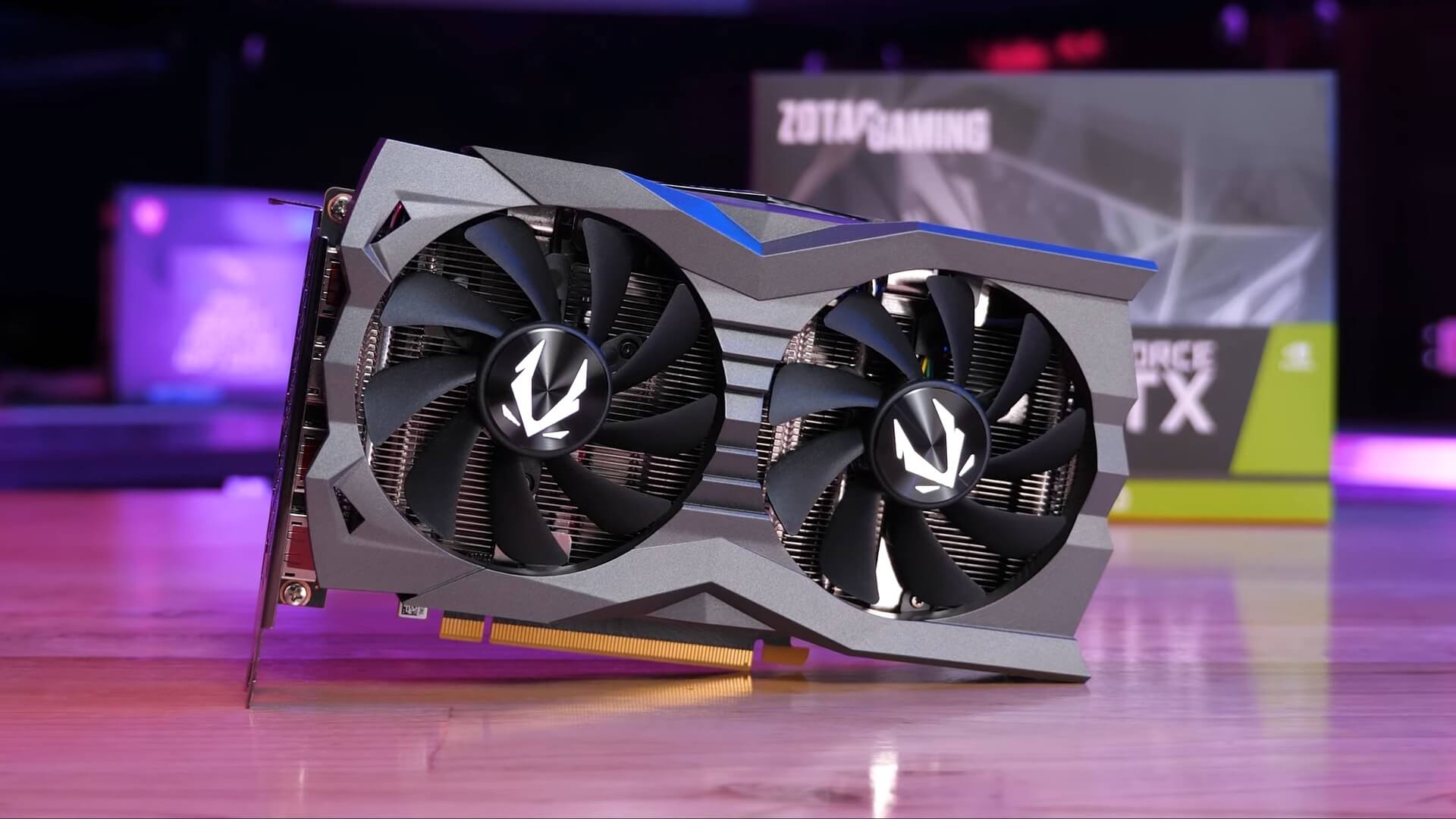
As of writing, information technology's possible to buy a 6GB RTX 2060 from retailers like Newegg for $620, which is nearly a fourscore% premium over the $350 they sold for back in 2019. We could find a single 12GB model on offer for $830. That's a 34% premium over existing 6GB cards, and it's a like story in other markets where we checked. In short, it's impossible to observe i at a reasonable price. Then of course, Nvidia was clever in not including an MSRP for the new 12GB variant in the formal announcement and we suspect that was all part of their strategy.
You run into, we've always idea it'd make sense for Nvidia and AMD to spin up past production lines on older nodes to assistance convalesce the supply bug, just as Nvidia appears to be finally doing with the 12GB RTX 2060. However, nosotros were mistaken in thinking they'd do this because they cared about gamers, the customers that got them where they are today.
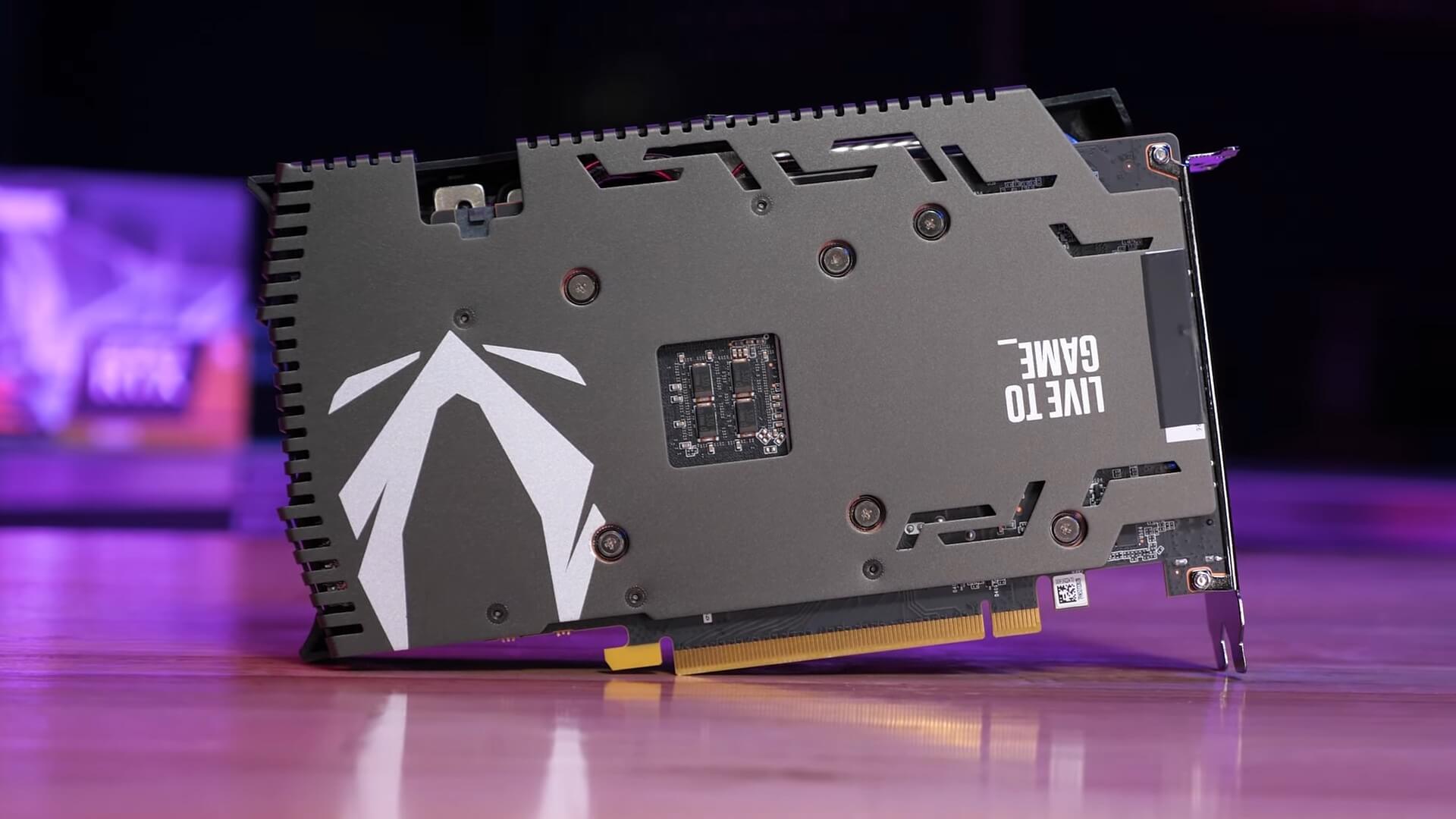
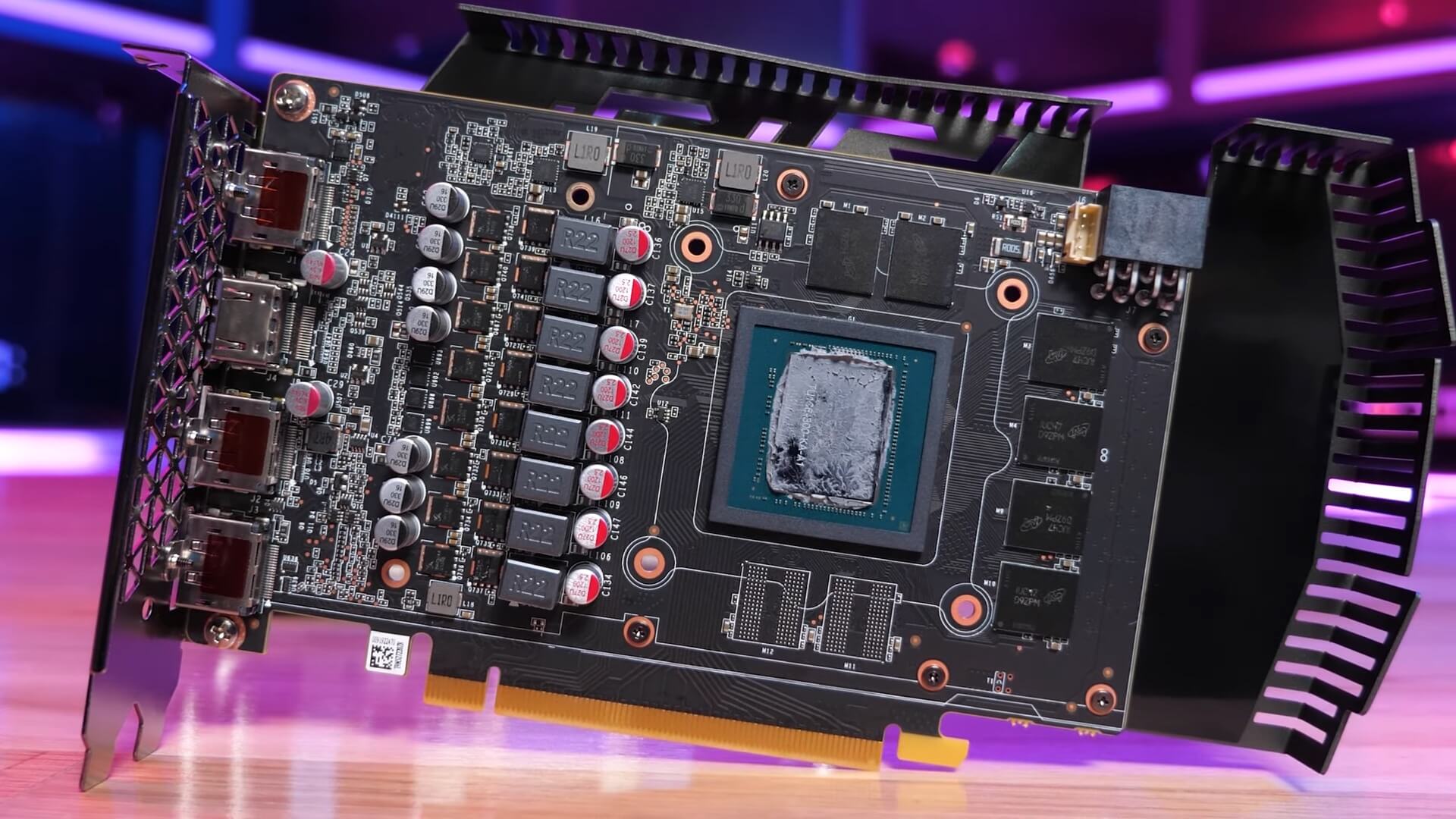
After all, these are businesses and their principal objective is to make money, maximize profits and please shareholders. Thus, flooding the market with affordable previous-gen products isn't in their best interest, especially when they can simply sell those products at unheard of margins to miners instead.
Put simply, the 12GB RTX 2060 was never intended to be sold to gamers, instead Nvidia is looking to capitalize on the current situation and increase supply to miners. The longer this goes on, the less important gamers will get to GPU makers equally their intended market. But what pick exercise gamers have?
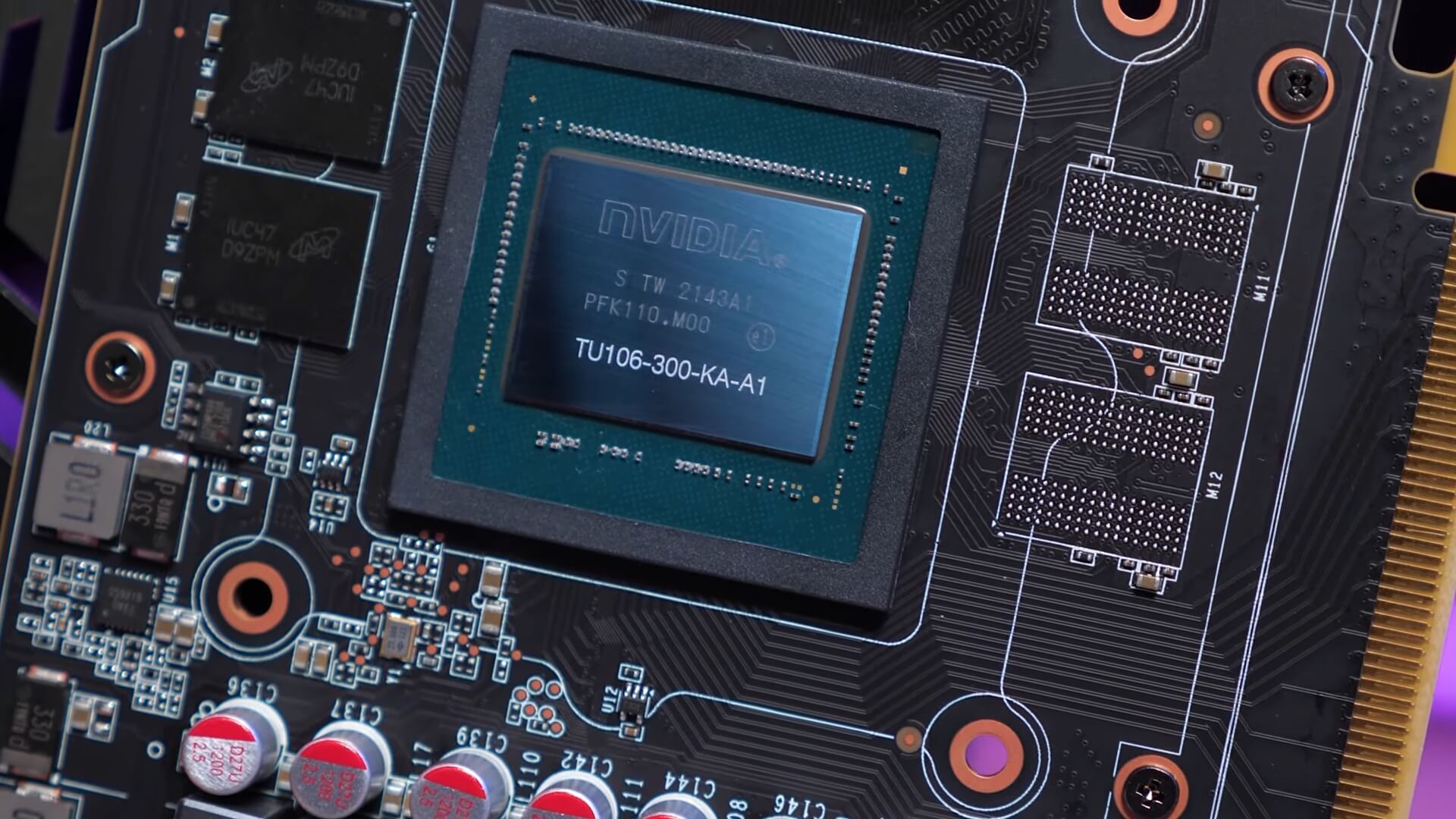
Moreover, the minute there's a crypto crash and things starting time to become back to normal, gamers will be stampeding over 1 another to get that shiny new GeForce graphics card. Nvidia knows this and their but concern is managing business after the inevitable end of the electric current cryptocurrency nail.
Arguably, the best style to do this is to sell equally many not-competitive gaming graphics cards as they tin can to miners, so when they eventually flood the 2d mitt market place, they'll exist almost worthless. Then once again, that'due south why the 12GB RTX 2060 exists, and why it's unlikely you'll always buy ane for gaming. Be that as it may, if past some phenomenon it ends upwardly making sense for you, how exactly does information technology perform? To notice out, we purchased a (grossly overpaid) Zotac 12GB RTX 2060 nosotros briefly discussed in this month's GPU pricing update.
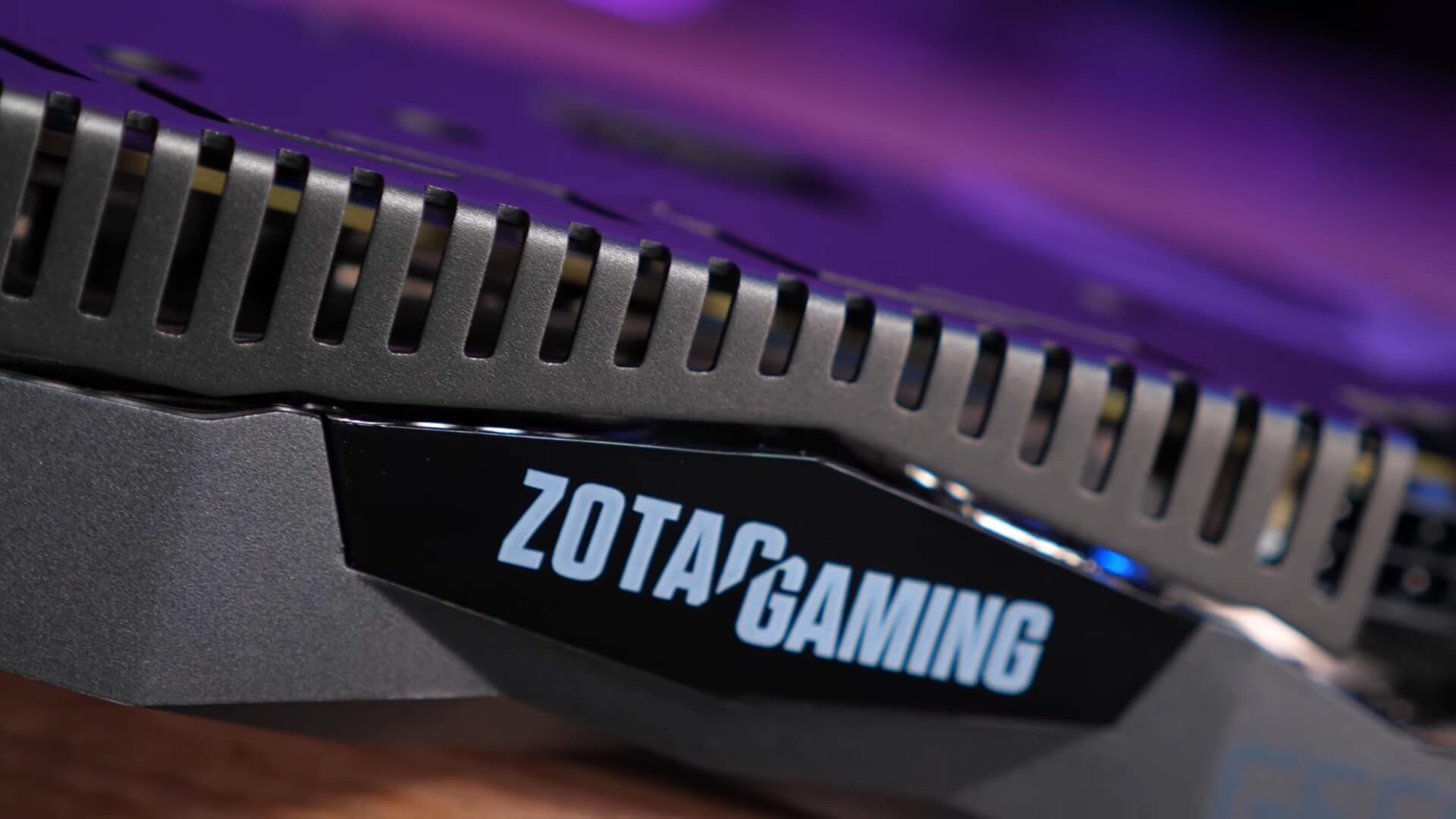
Before we jump into the benchmarks, let'southward chop-chop get over the 12GB RTX 2060's specs, as well as the test system. Different the original 6GB card, the 12GB version features 2176 CUDA cores, which is the same amount equally the 2060 Super, which would make it a 2060 Super but with more VRAM.
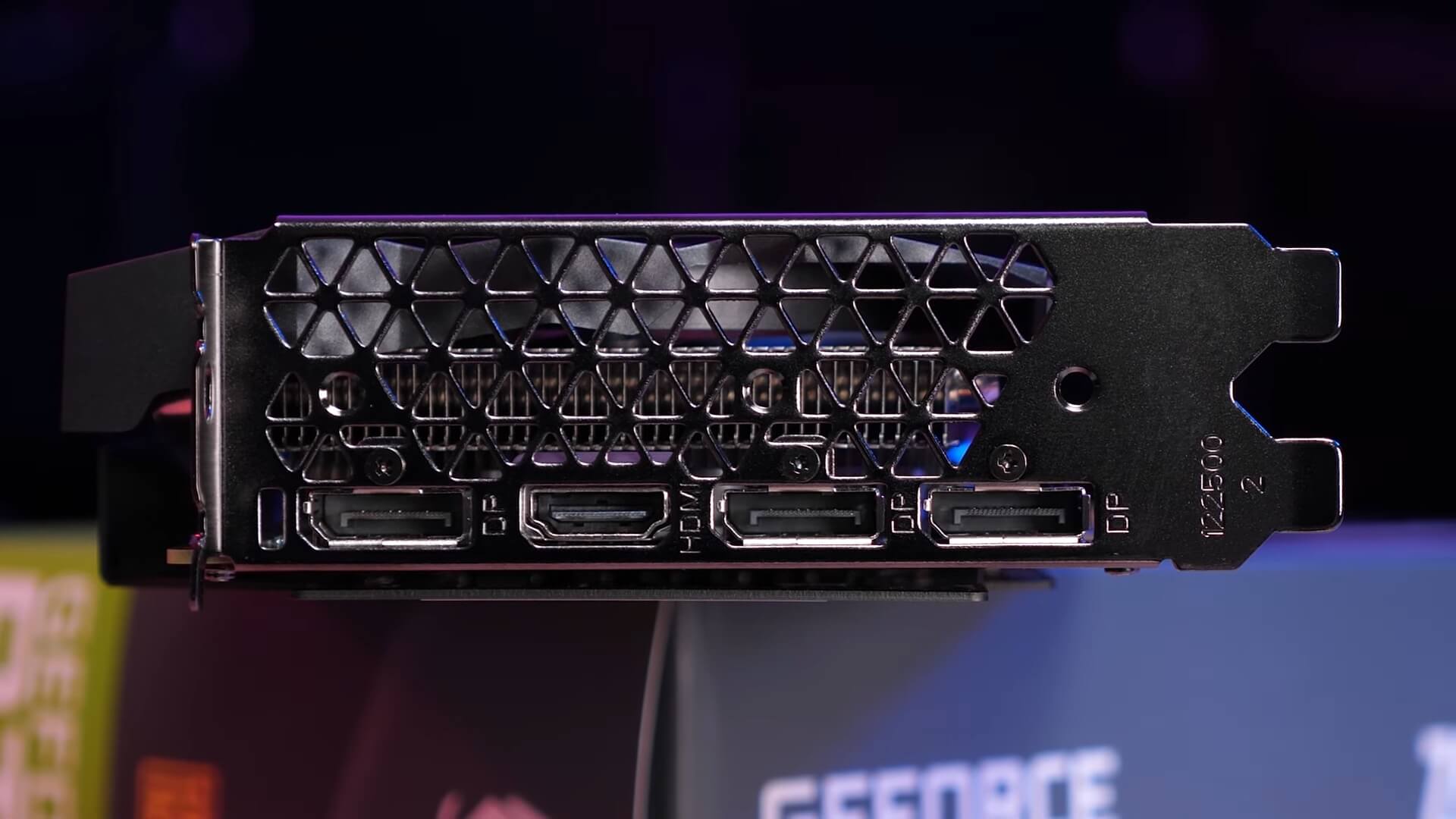
But there's more to it, unlike the 2060 Super which uses a 256-bit wide memory bus, the 12GB 2060 uses the same 192-flake motorbus of the original 2060, reducing the memory bandwidth from 448 GB/south to just 336 GB/due south, a large 25% reduction. This means that the 12GB 2060 should perform between the 6GB 2060 and the 2060 Super, and depending on the game and quality settings used it may be closer to either model. As for testing, nosotros're using our Ryzen ix 5950X GPU examination arrangement featuring 32GB of dual rank, dual channel DDR4-3200 CL14 memory. Allow's get into the data…
Benchmarks
Starting with Assassin'southward Creed Valhalla at 1080p and please note these results have been updated with the latest version of the game which greatly enhanced the performance of high-end GeForce GPUs, with more mild gains for the mid-range or lower-finish models, like the RTX 2060.
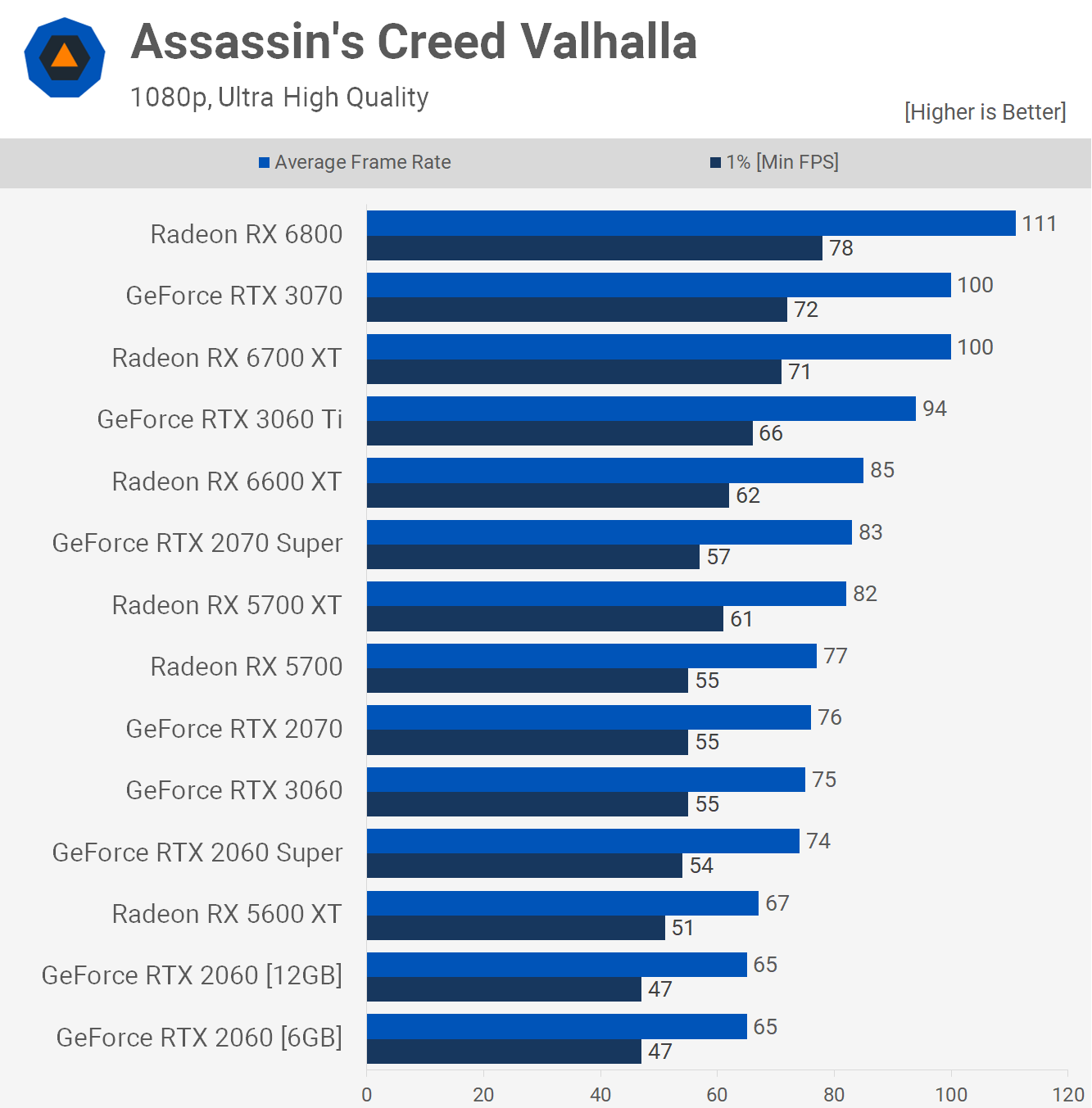
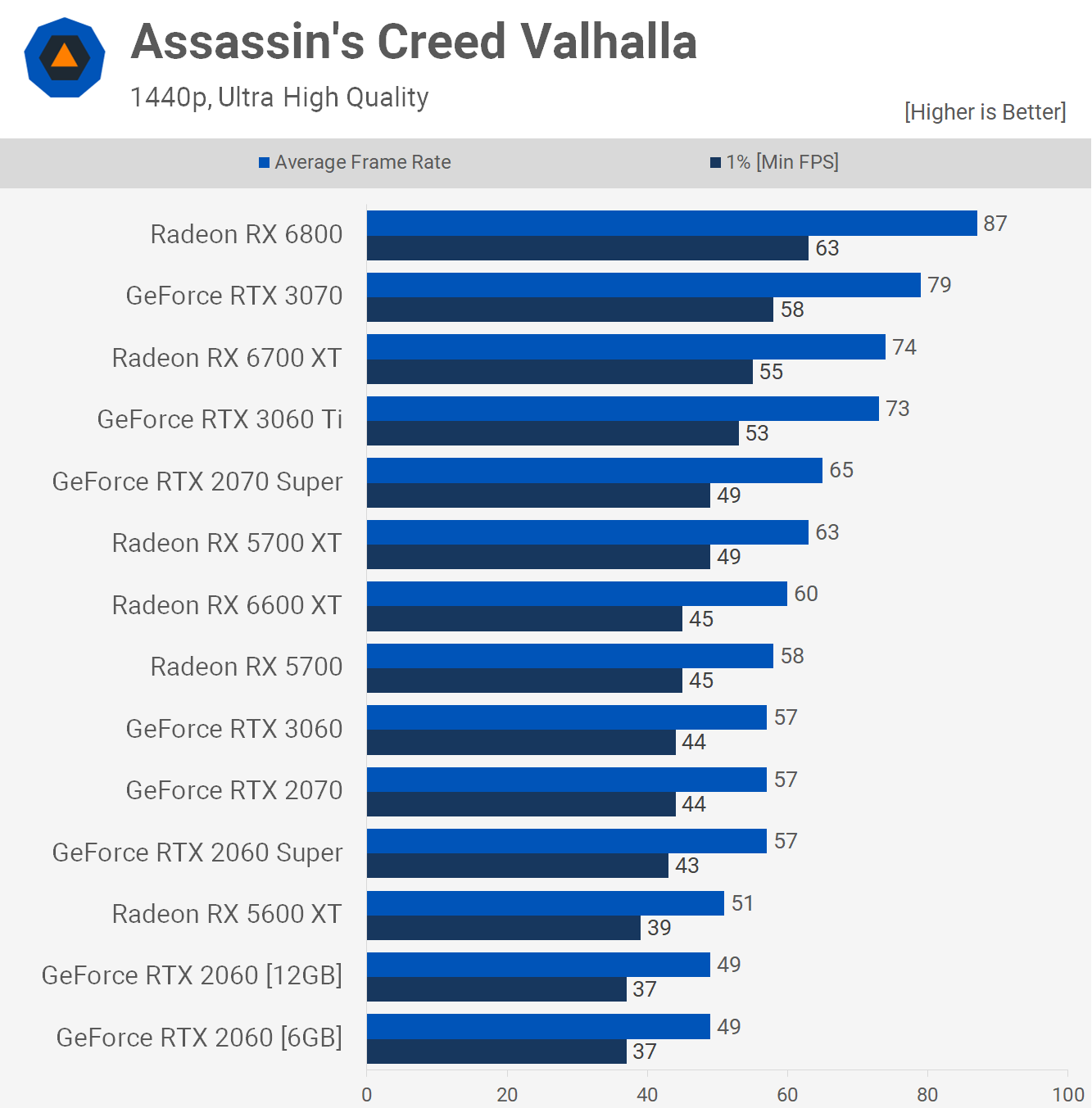
Hither the 12GB model is no faster than the 6GB version, which is obviously disappointing and it meant both were slightly slower than the 5600 XT.
The state of affairs at 1440p is no different with both 2060 models averaging just 49 fps, making them slower than the 5600 XT.
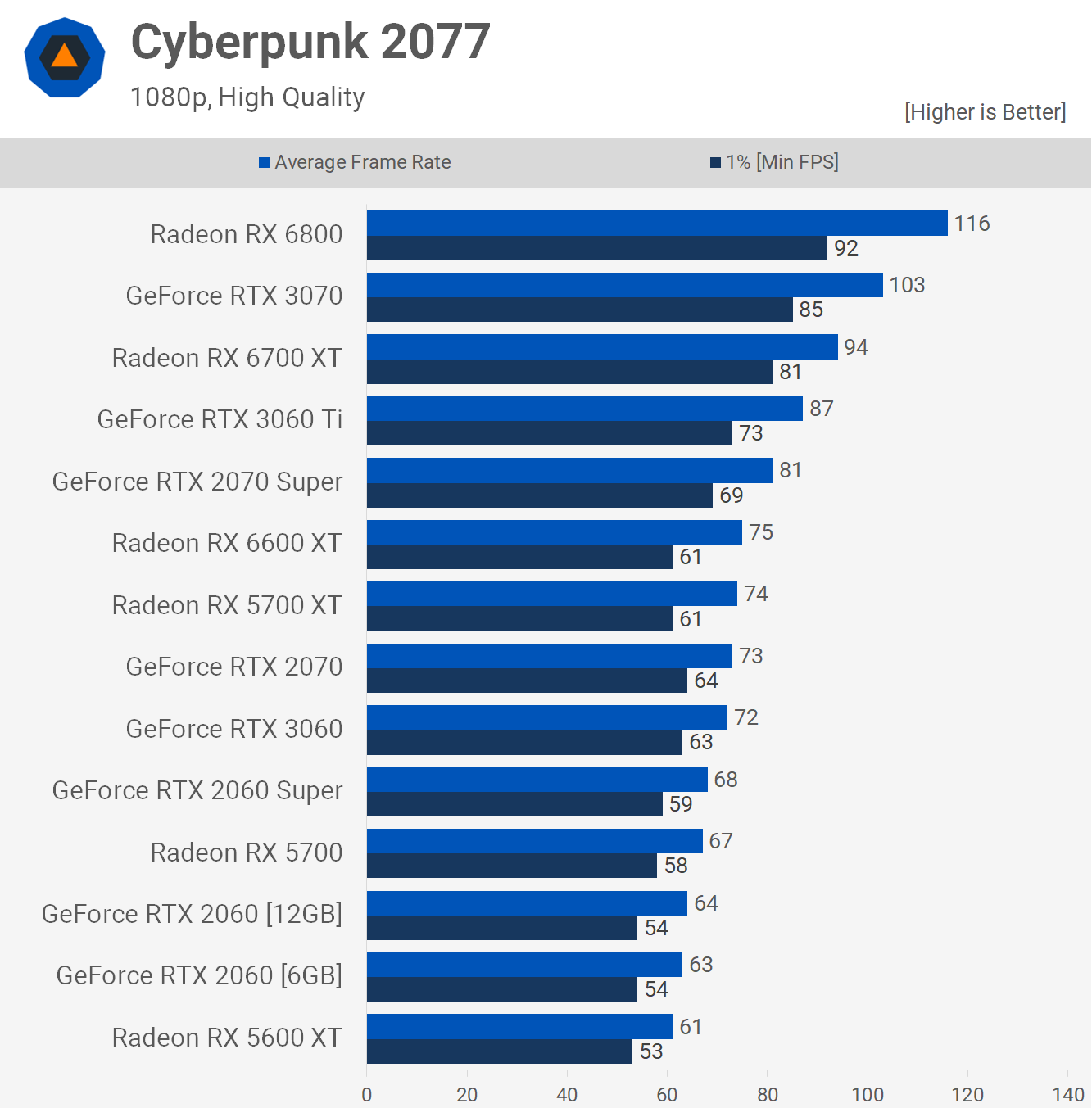
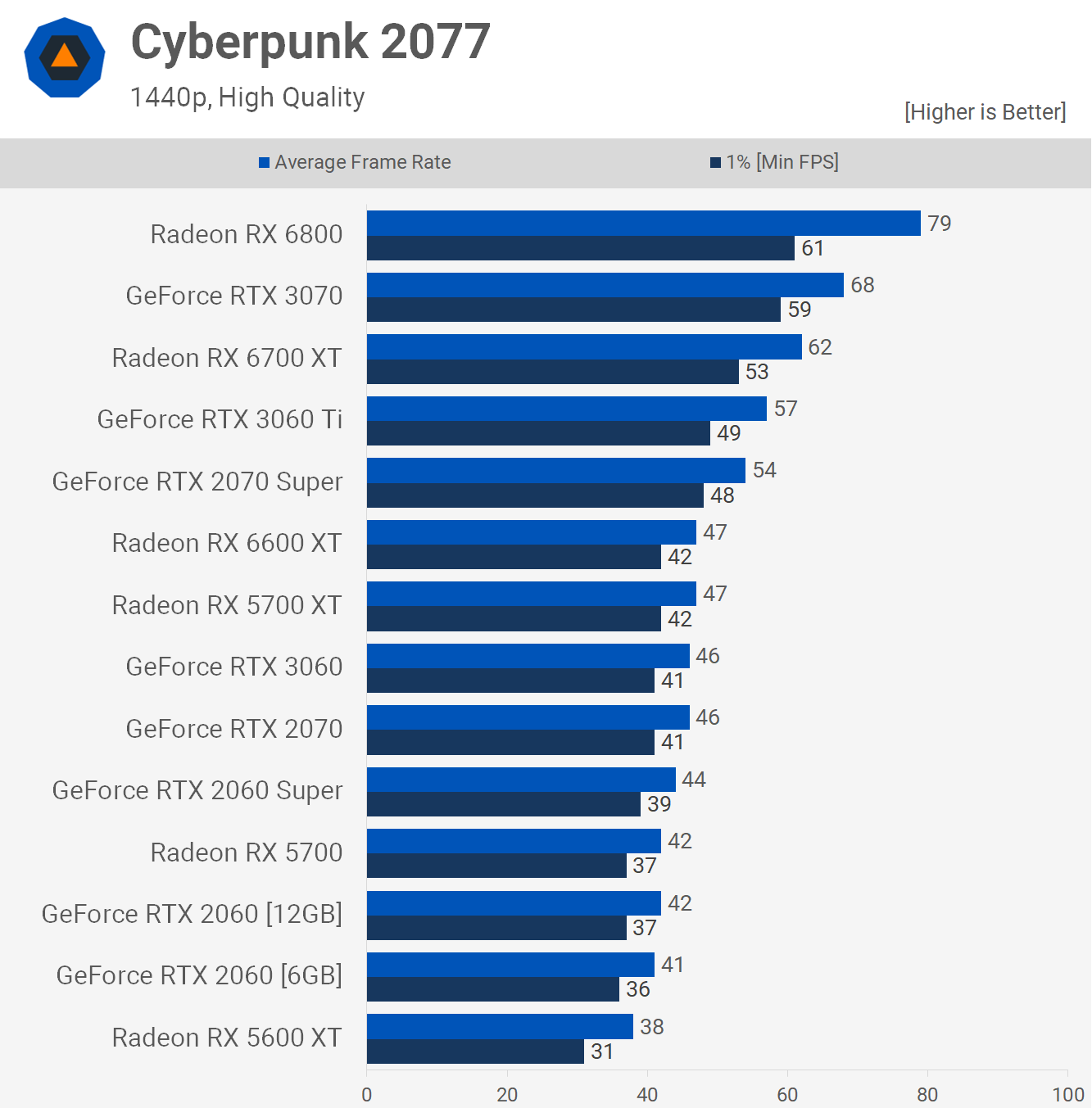
Adjacent we take Cyberpunk 2077 and nosotros're looking at very similar functioning to the 6GB model. Actually at this indicate you lot can call what we're seeing at 1080p 'identical functioning', with 64 fps on boilerplate using slightly dialed down quality settings.
The numbers at 1440p won't exactly print, and despite the larger buffer, performance goes largely unchanged when compared to the former 6GB model.
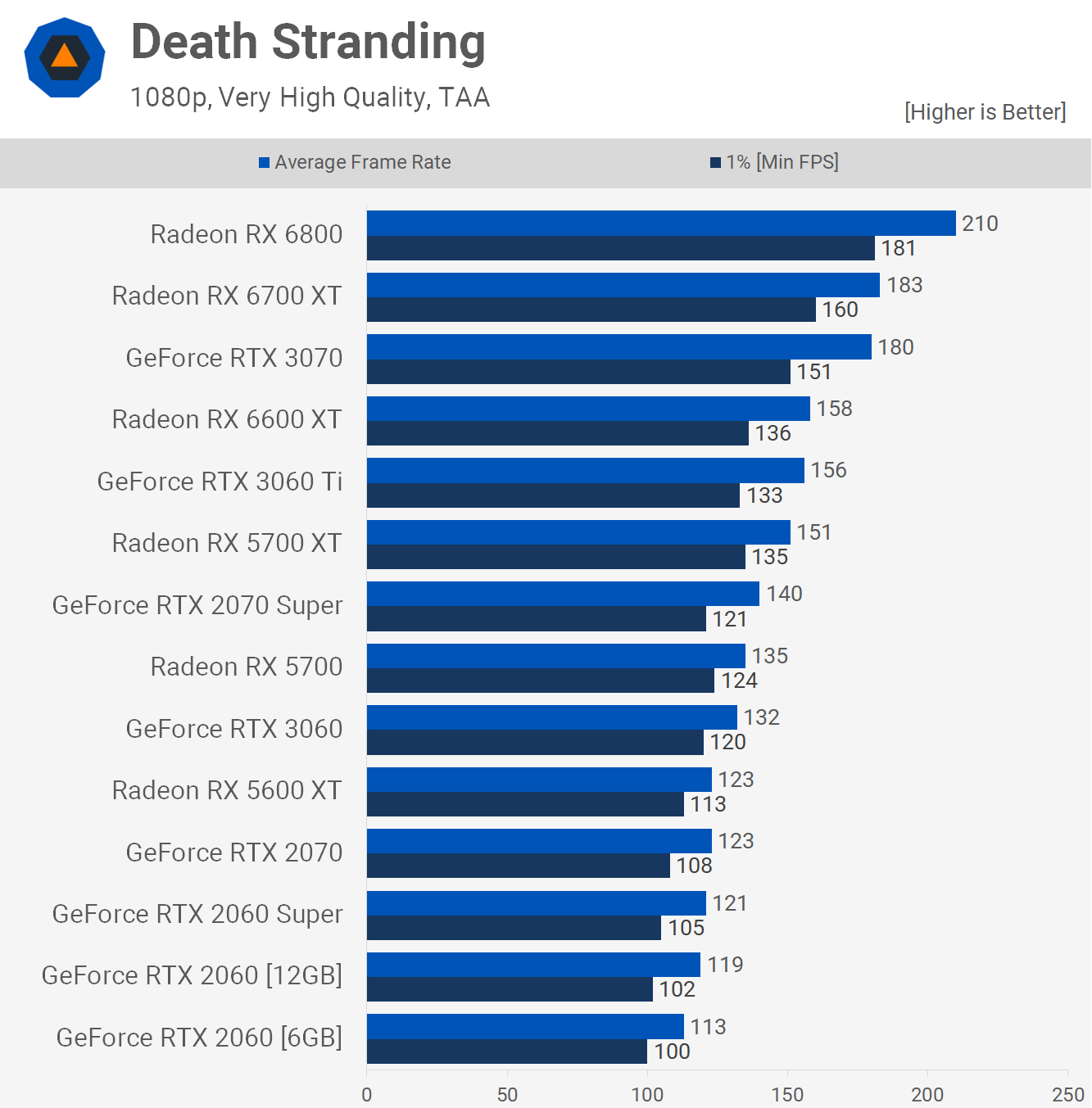
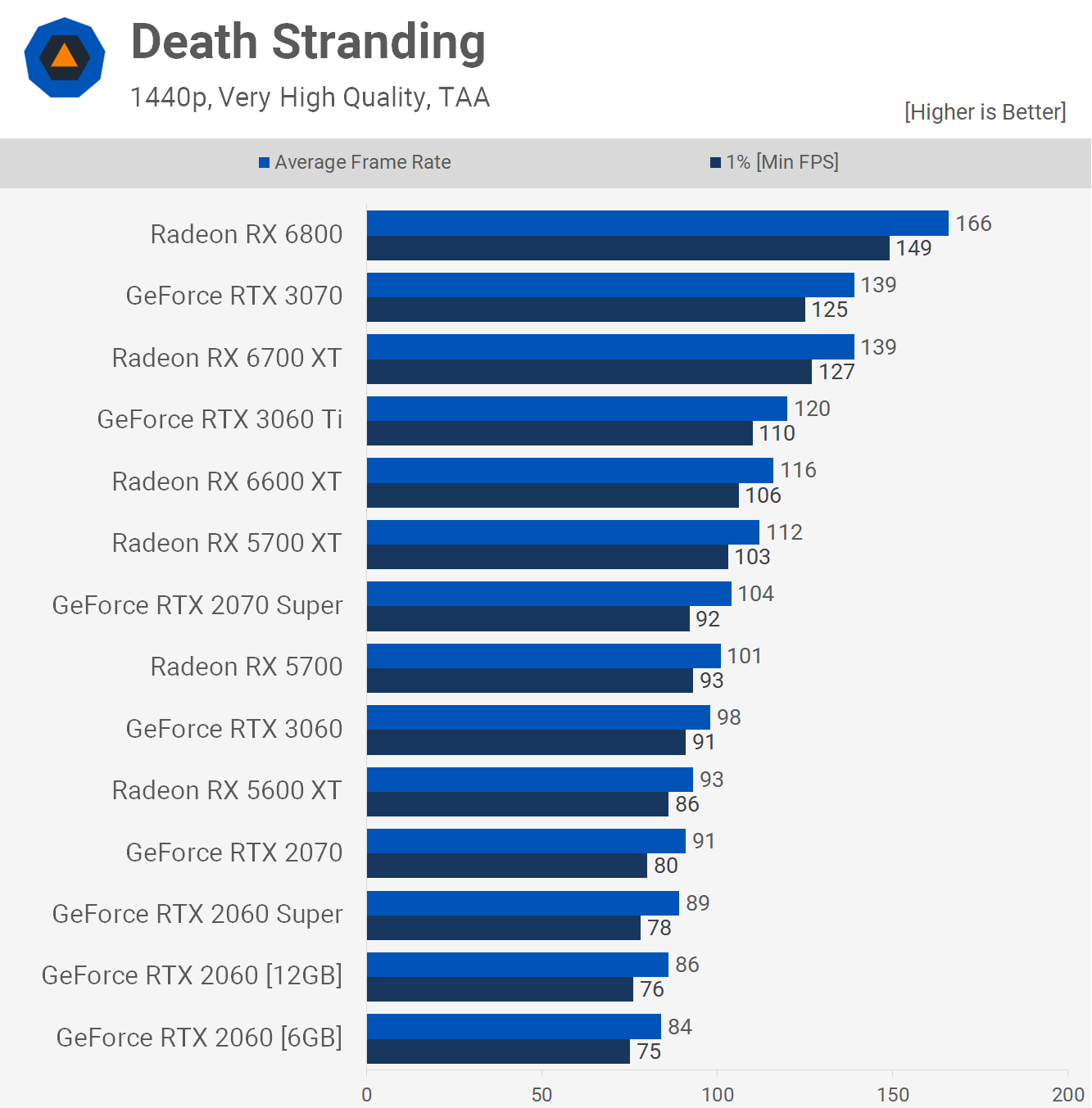
We're looking at 2060 Super-like functioning in Death Stranding at 1080p with 119 fps on average, making the 12GB 2060 just v% faster than the 6GB version.
Oddly, equally we increment the resolution the 12GB 2060 drops closer to the 6GB version as it would announced memory bandwidth is more of an issue hither, opposed to memory capacity.
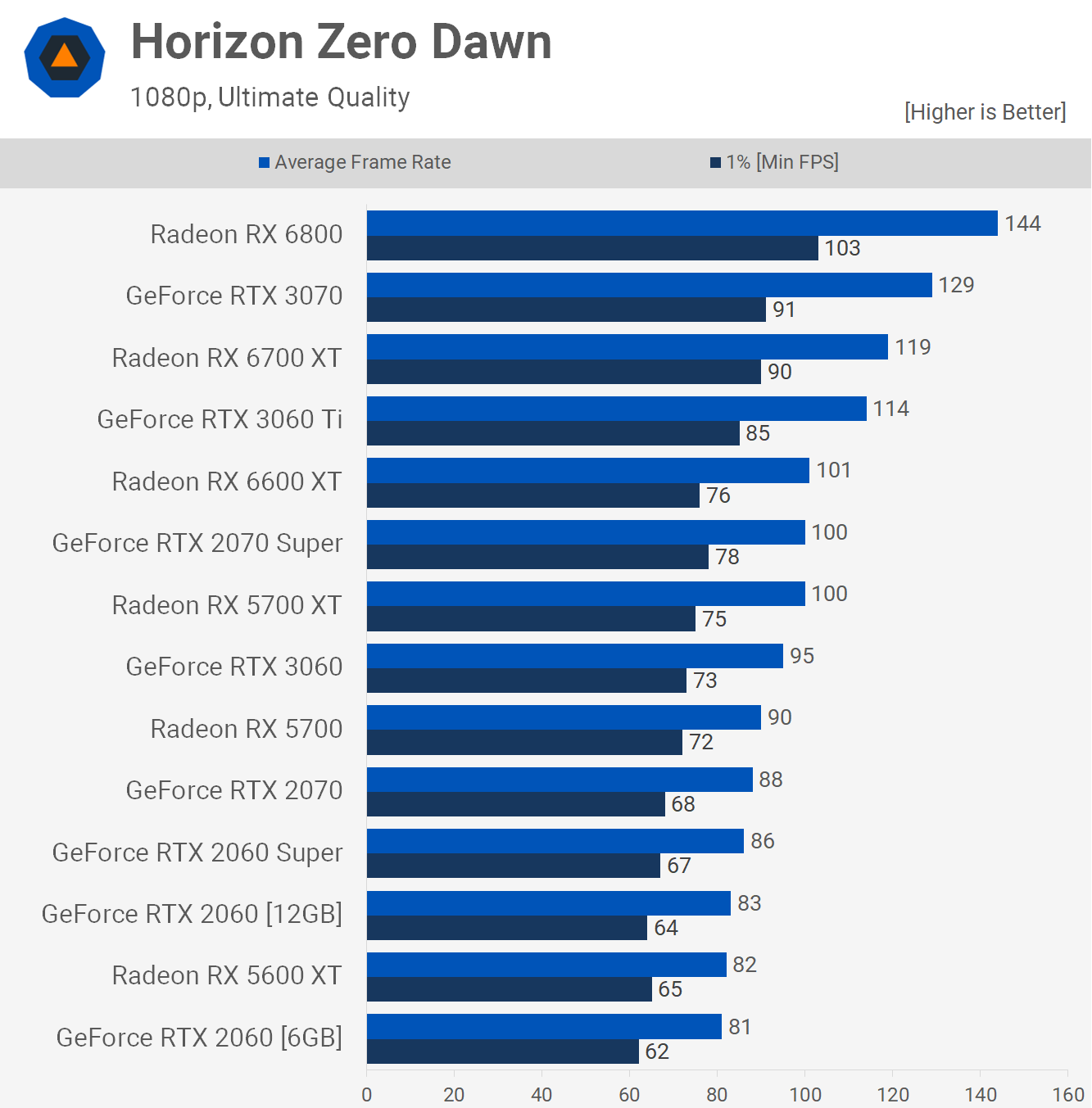
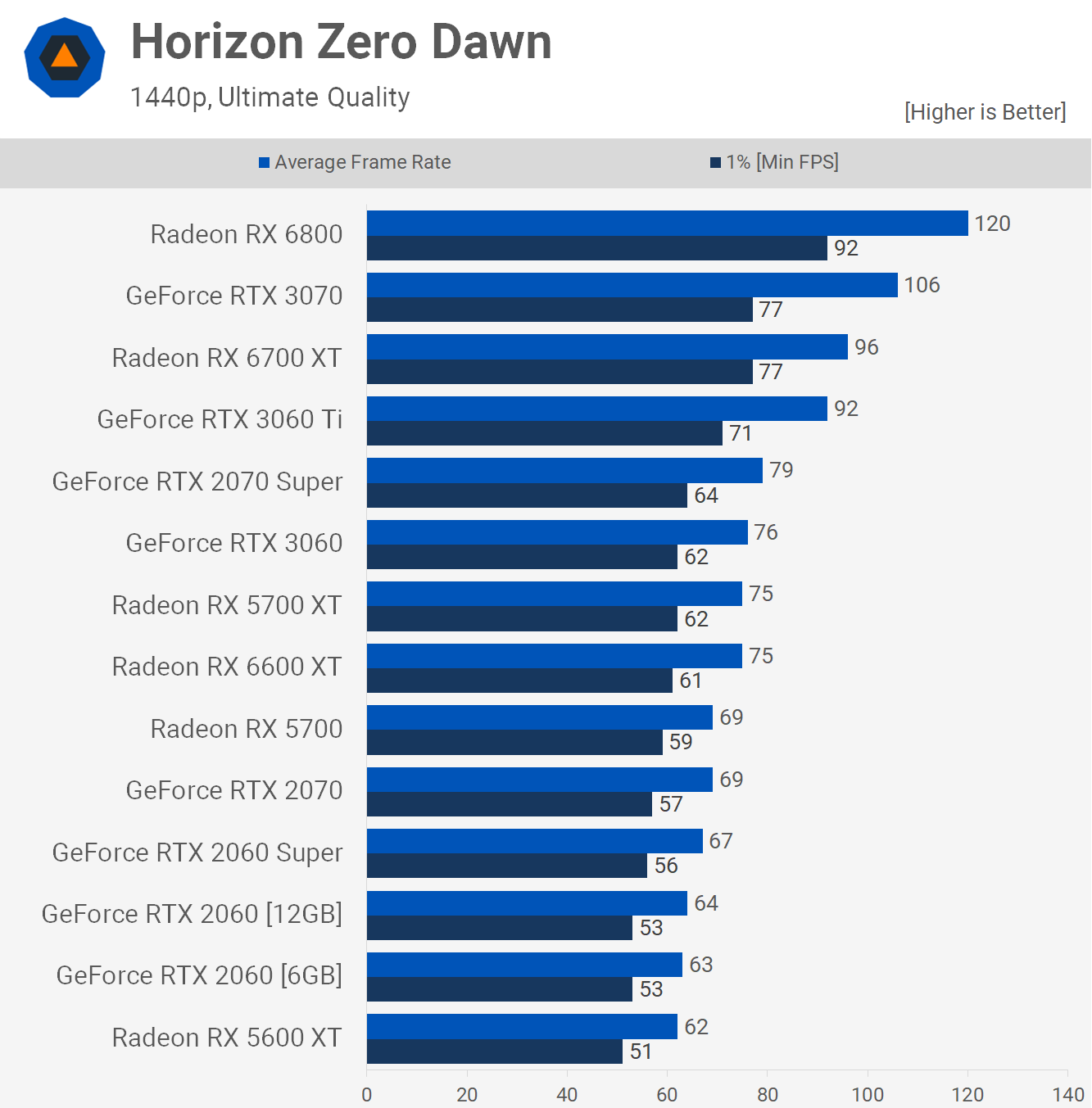
Testing with Horizon Nothing Dawn we see the new 12GB 2060 is positioned betwixt the 6GB version and the 2060 Super with 83 fps on average.
Then at 1440p the margin is decreased equally the larger retentiveness capacity isn't required and instead memory bandwidth becomes more than relevant.
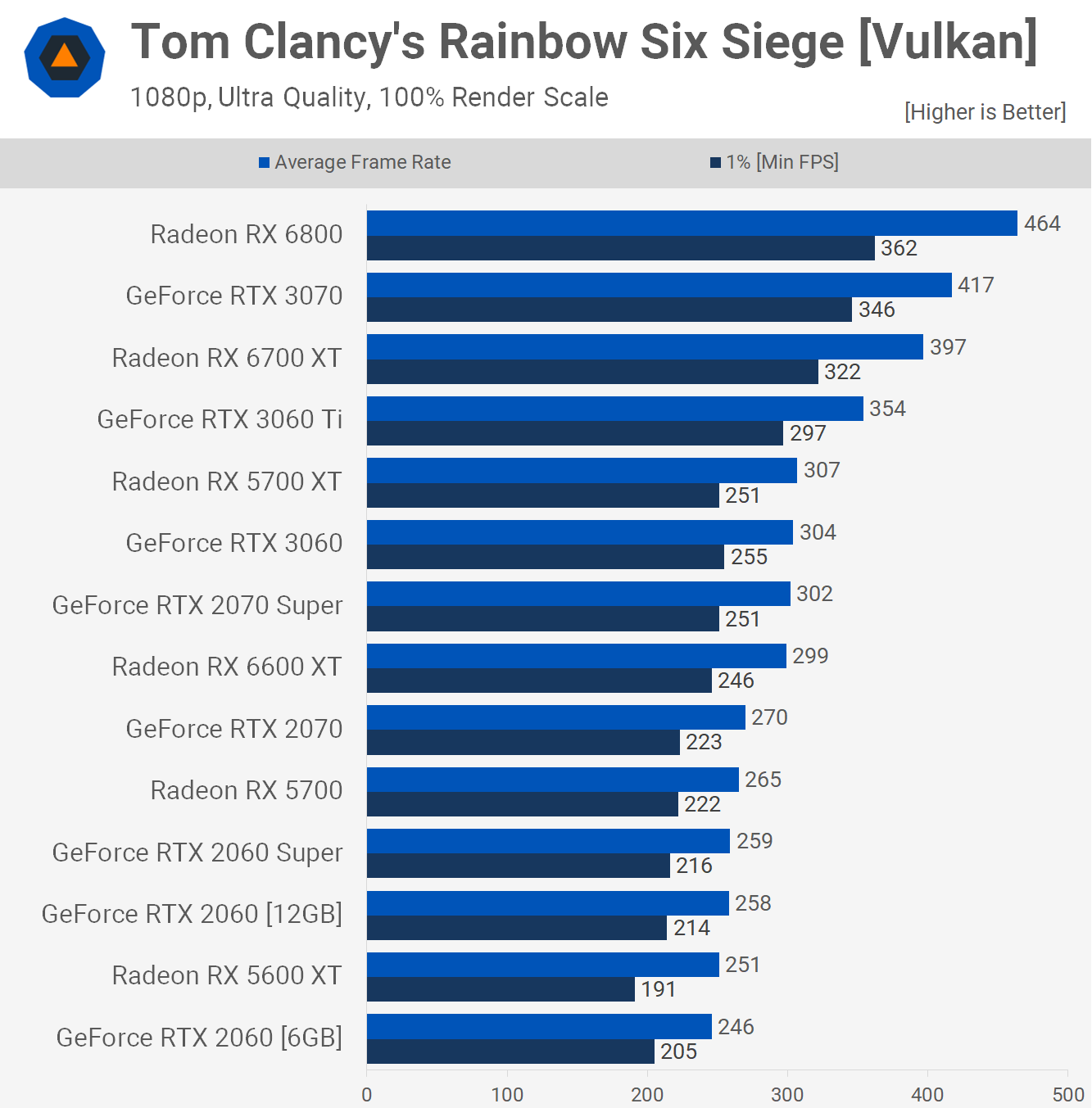
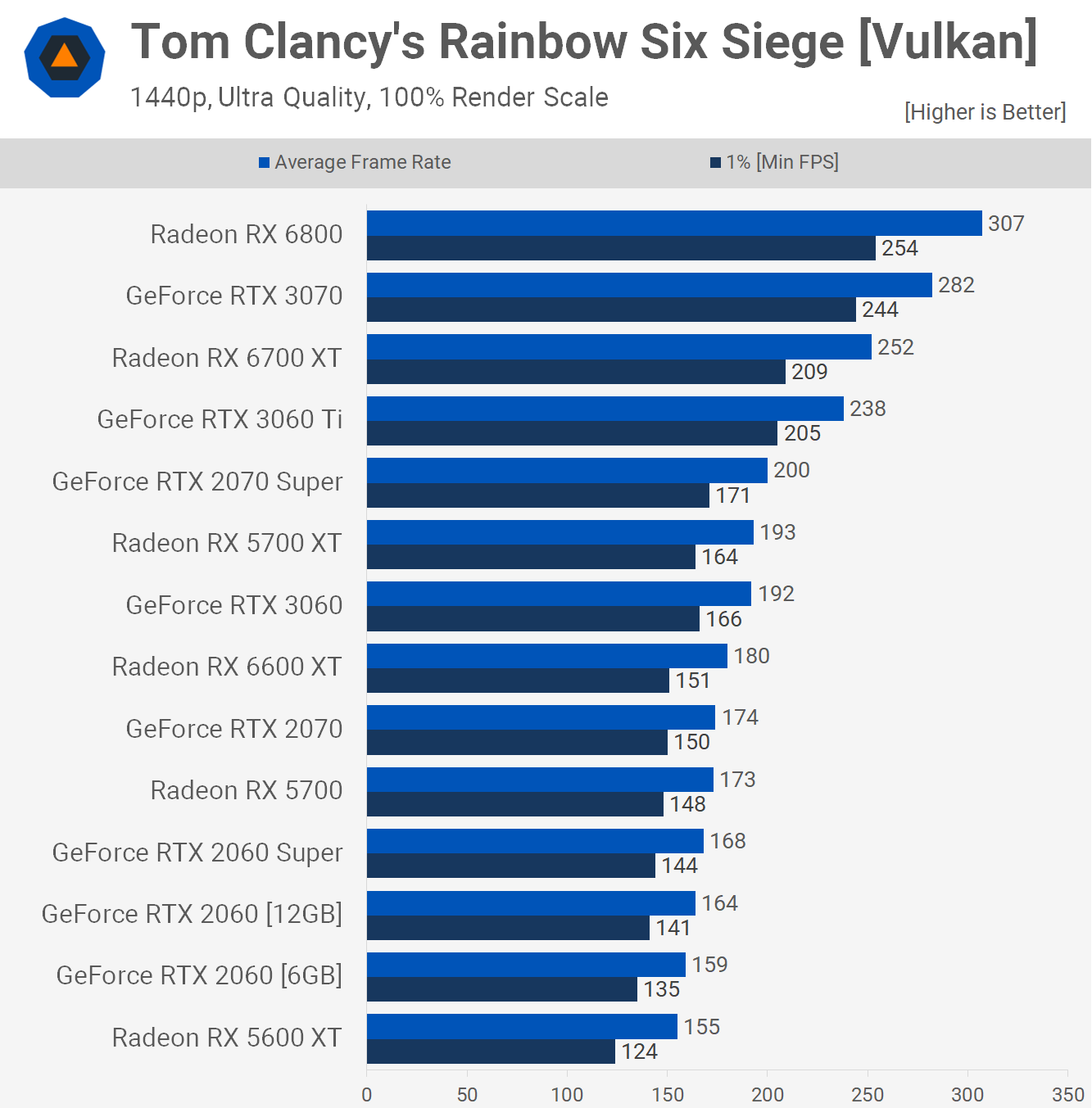
Nosotros're looking at up to a v% boost in Rainbow Vi Siege at 1080p, which is most every bit expert as it gets for the 12GB 2060 over the 6GB board.
Increasing the resolution to 1440p reduces the margin betwixt the 6GB and 12GB models due to both having the same 336 GB/s bandwidth.
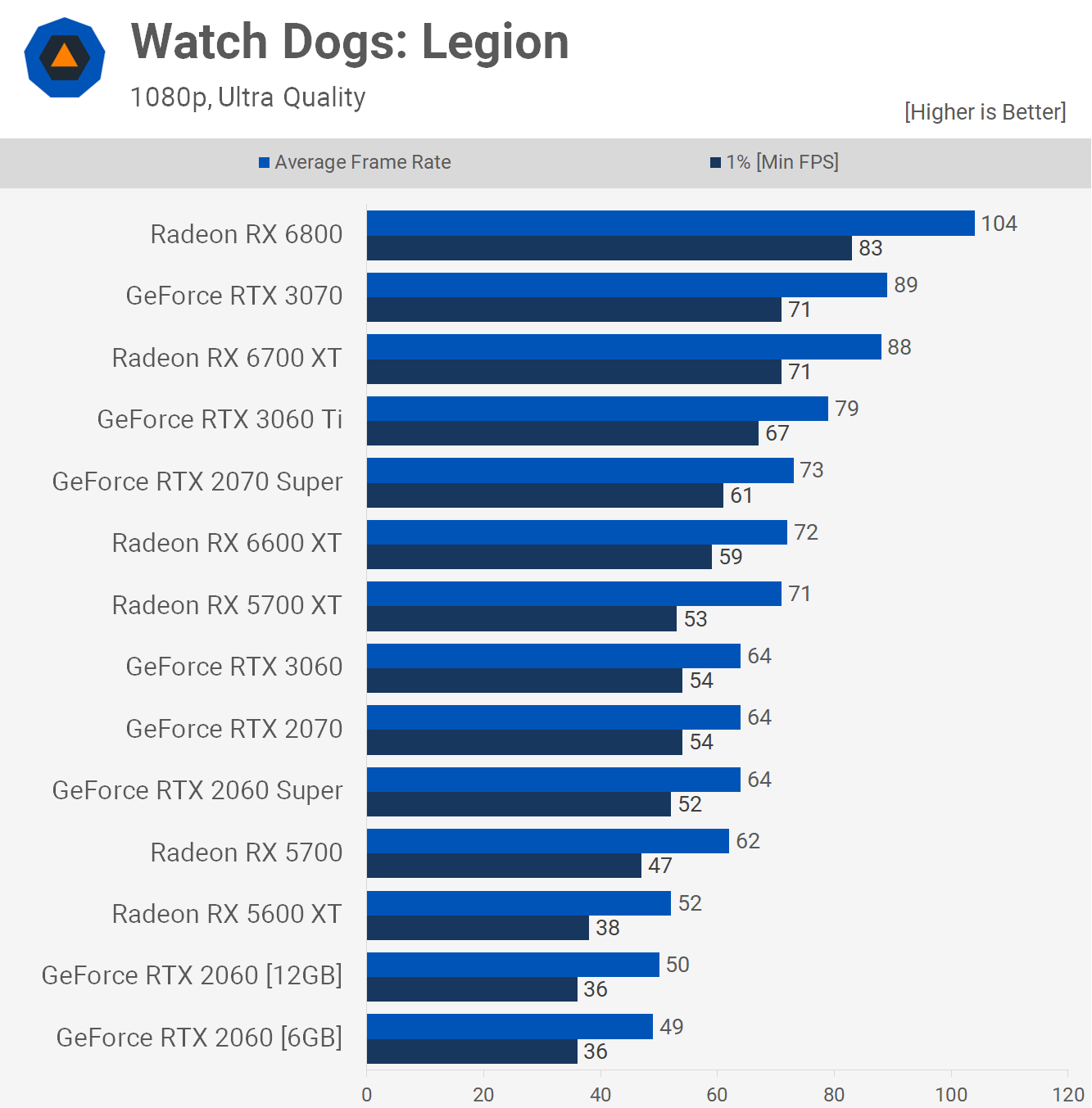

Finally, we'll have a brief look at the Watch Dogs Legion results and here the RTX 2060 is rather unimpressive, regardless of which version we wait at as performance is the aforementioned, falling well short of sixty fps as they trail the RX 5600 XT.
The 5600 XT was also faster at 1440p and although the 12GB 2060 was up to 9% faster than the 6GB variant, both fell brusque of a 40 fps boilerplate.
Power Consumption

In terms of power consumption, the 12GB model is no different to the 6GB version. Both pushed total organisation usage to 358 watts when gaming, about the same power usage as the faster RTX 3060.
Performance Summary
It's fair to say the 12GB version of the GeForce RTX 2060 performed every bit expected, or maybe a picayune worse than expected. It's articulate that the limited retentivity motorcoach is choking the GPU a trivial, especially at 1440p. Simply before we wrap this upwardly let's take a look at the average functioning seen at 1080p and 1440p, as well equally a wait at the thermal performance of the Zotac Gaming Twin Fan model...

Starting with the 1080p results we see that on average across the 12 games tested, the 2060 12GB was ~4% faster than the original 6GB model, which is nil to write habitation about. This also made it the 2d slowest GPU in our test, or technically information technology was tied with the 5600 XT, another boring GPU by today'southward standards, but certainly skillful enough for 1080p gaming.

1440p was a bit more of a struggle but even here we saw over 60 fps on average across the games tested, which is decent. Again, the 12GB 2060 was 4% faster than the 6GB model and roughly on par with the 5600 XT.
After 30 minutes of gaming in a 21 C room within an enclosed case, the Corsair Obsidian 500D, the Zotac Gaming RTX 2060 Twin Fan 12GB peaked at 68 C, which is a great result, though the fan speed was a petty high at 2200 RPM.
The bill of fare remained relatively quiet at 43 dBA and not much louder than our test system'southward case fans. This is a stock model, so it operates at the reference specification and that saw a core clock of 1875 MHz on boilerplate with the memory at 14 Gbps.
What We Learned
In that location you lot have it... the super unexciting 12GB version of the GeForce RTX 2060. Of course, had this graphics menu managed to come in at a lower price signal with strong supply we'd be super excited about its release, but that was never going to be the case. This product was always intended for miners.
Bluntly, gamers don't need a 12GB version of the RTX 2060. Just requite united states of america the former model at a half decent price and it'southward happy days, as deplorable equally that may be. And while it'southward not a good situation for PC gamers or builders, it'due south keen news for Nvidia and AMD.
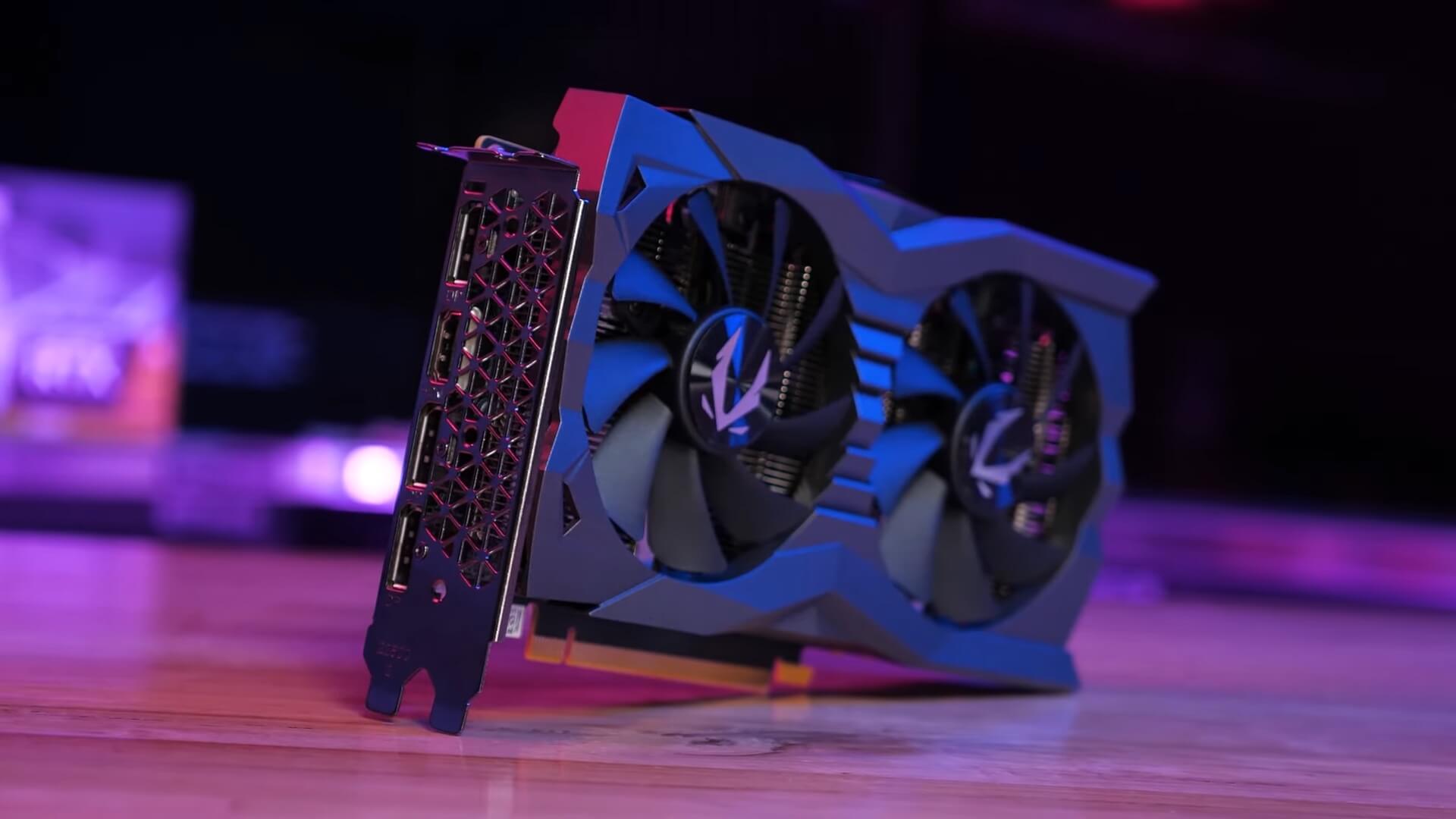
Generally speaking, the 12GB 2060 is irrelevant for gamers. For united states though it was at least interesting to compare a like spec 2060 with 6GB and 12GB of VRAM, and it'due south an interesting discussion that heated up back in early on 2019. At the time, many criticized the RTX 2060 for its lack of VRAM, but we felt overall it was a solid product and certainly one of the better offerings in the Turing serial.
Still, the pushback was strong, and then we investigated memory usage in 37 games and found that the 2060 worked fine relative to the RTX 2070 at non just 1440p, but also 4K and this lead us to conclude that memory usage for the 2060 wouldn't be an issue for years to come. Crystal brawl stuff, only it's been three years since we published that review, and it's fair to say the 6GB 2060 is still fine for 1440p gaming.
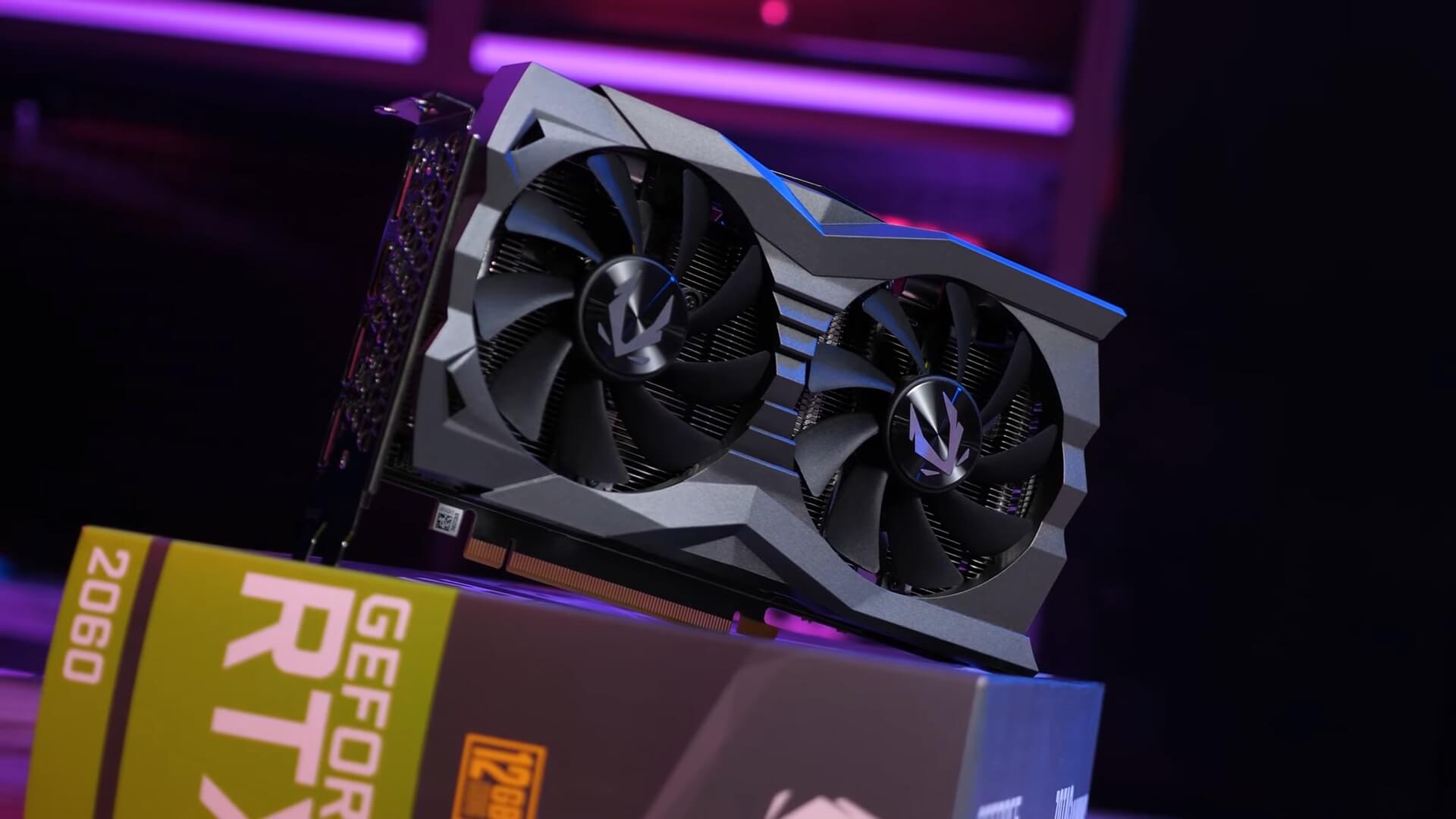
If you appreciated this depressing review, spread the discussion and share this feature, so more than gamers can larn why they should avoid the 12GB 2060. And of course, stay tuned for more new GeForce and Radeon product reviews that you lot probably won't be able to buy early next year.
Shopping Shortcuts:
- Nvidia GeForce RTX 2060 on Amazon
- Nvidia GeForce RTX 3060 on Amazon
- Nvidia GeForce RTX 3080 on Amazon
- AMD Radeon RX 6600 XT on Amazon
- AMD Radeon RX 6700 XT on Amazon
- Intel Cadre i5-12600K on Amazon
- Intel Core i7-12700K on Amazon
- AMD Ryzen 5 5600X on Amazon
- AMD Ryzen 7 5800X on Amazon
- Corsair Obsidian 500D Example on Amazon
Source: https://www.techspot.com/review/2390-nvidia-geforce-rtx-2060-12gb/
Posted by: mcculloughaskild.blogspot.com


0 Response to "More VRAM, But for Who? Nvidia RTX 2060 12GB Review"
Post a Comment